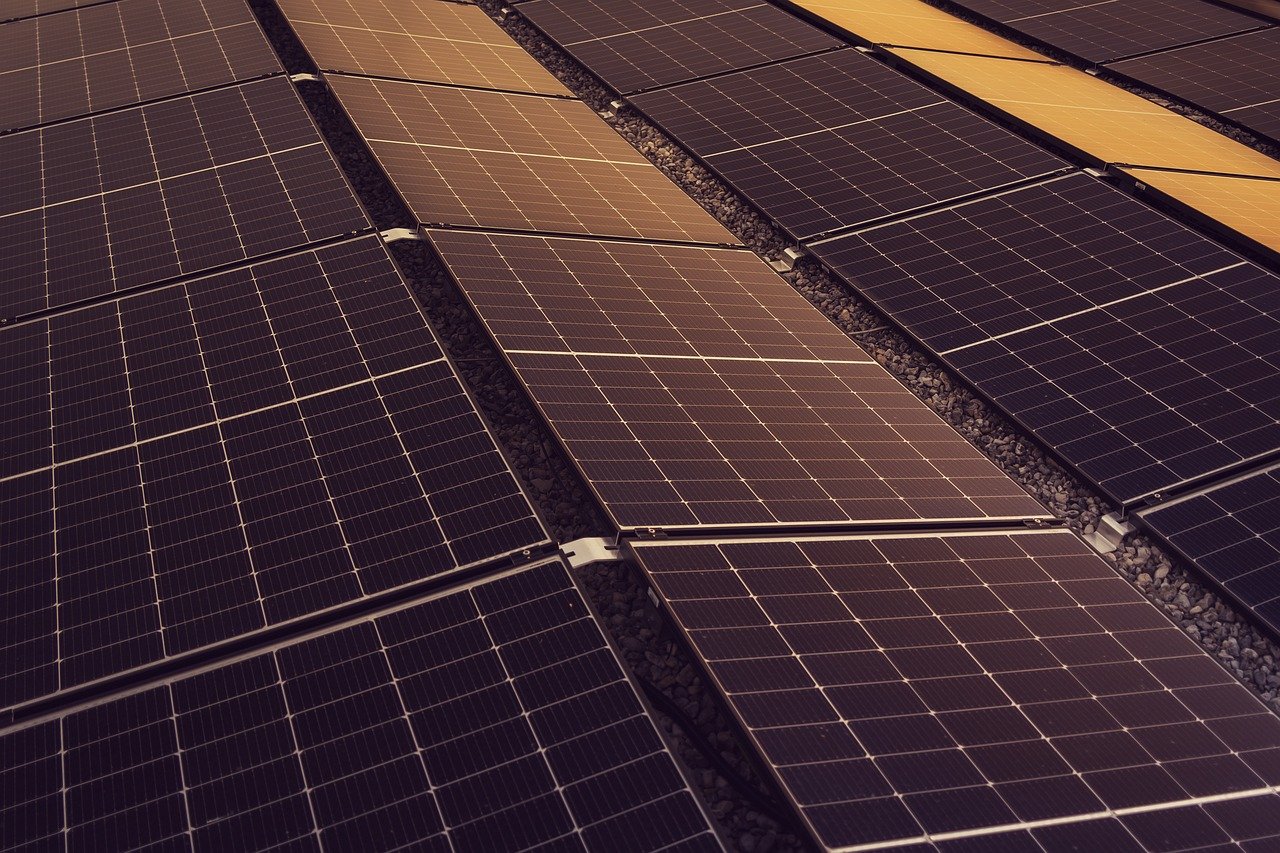Hoping to pocket substantial savings with solar energy? Just as how you meticulously picked your panels for their efficiency, the angle at which they’re installed matters too. Understanding the factors that play into finding the optimum solar panel angle can maximize your energy production, leading to more significant savings and a reduced carbon footprint. Your guide to “Determining the Ideal Solar Panel Angle for Maximum Savings” will help you learn about these factors, such as your geographical location and the time of the year, dispelling any myths and helping you make an informed decision to get the most out of your solar panels.
Understanding Solar Panel Angles
Solar panels are a fantastic way for you to harness renewable energy and save on your electricity bills. But did you know that the angle at which you place your panels can significantly affect their efficiency? Let’s explore what it means.
Definition of Solar Panel Angles
solar panel angles refer to the tilt of your solar panels relative to the ground or the roof. It’s about positioning the panel in a way that it receives the maximum amount of sunlight throughout the day.
Reason why Solar Panel Angles are Important
The angle at which your solar panels are set is crucial because it directly influences the amount of sunlight they capture. The more sunlight they absorb, the more electricity they produce – and the more savings you make on your energy costs!
The Science Behind Solar Panel Angles
The science behind this is simple: the sun moves across the sky during the day. So, for your solar panels to capture the most sunlight, they need to be tilted at an angle that allows them to track and soak up the sun’s rays as it moves.
Factors Influencing Solar Panel Angles
Several factors determine the ideal angle for your solar panels. Let’s drill down into them.
The Geographic Location
Where you are in the world significantly impacts your perfect solar panel angle. The closer you are to the equator, the lower the optimal tilt for your solar panels.
The Seasons
The sun’s path across the sky changes with the seasons. That means optimal solar panel angles vary throughout the year.
Roof Design and Constraints
Your roof’s design might limit your ability to tilt your solar panels. It’s a balance between optimizing the panel angle and modifying the roof design with minimal effort and costs.
Solar Panel Tilt Mechanism
Does your solar panel system have a fixed or adjustable tilt mechanism? An adjustable one allows you to change the panel angle to keep the most exposure to the sun throughout the year.

Maximizing Solar Energy Production
Maximizing the energy production of your solar panels is essential. All it takes is a little understanding and some tweaks.
Importance of Maximum Solar Energy
When your solar panels produce the maximum amount of solar energy, you save more on your power bill and contribute significantly to a cleaner environment.
The Relationship Between Solar Panel Angle and Energy Production
The angle of your solar panels is directly proportional to their energy production. A more optimally angled panel means more sun exposure, resulting in increased energy production.
Optimizing for Maximum Energy Production
Optimizing for maximum energy production involves finding the perfect panel angle, considering your geographic location, the seasons, and your roof’s design and constraints.
How Does Geographic Location Affect Solar Panel Angle
Where you live on Earth significantly affects the ideal angle for your solar panels.
Latitude and Its Effect on Solar Panel Angle
The angle between your solar panel and the sun’s rays is determined by your latitude. For instance, if you live on the equator, the ideal solar panel angle would be around 0 degrees, while living in higher latitudes requires a steeper panel tilt.
Calculating the Perfect Angle Based on Location
To calculate your perfect solar panel angle based on your location, you can use simple mathematical formulas. Generally, the formula is your latitude x 0.9 + 29 in winter, and your latitude x 0.9 – 23.5 in summer.
Regional Guidelines and Recommendations
Also, many locations have specific regional guidelines and recommendations for solar panel angles. You can check these recommendations to confirm your calculations.

Seasonal Adjustments for Solar Panels
Adjusting your solar panel angle according to the season can help you optimize energy production.
Spring and Autumn Equinox
The spring and autumn equinoxes are when you should set your solar panel angle to be equal to your latitude. This ensures maximum sun exposure as the sun is directly above the equator.
Winter Solstice Adjustments
On the winter solstice, when the sun is lower in the sky, panels should be tilted to a more significant degree. This helps capture as much sunlight as possible during shorter, cloudier days.
Summer Solstice Adjustments
Conversely, during the summer solstice, when the sun is high in the sky, the panel tilt should be less. This will help catch the summer sun’s strong rays.
Balancing Effort and Energy Production
Although adjusting your solar panel angle through the seasons can maximize energy production, it can also be a tremendous physical effort. That’s why it’s essential to weigh the potential energy production benefits against the effort and costs it takes to make these adjustments.
The Role of Roof Design on Solar Panel Angle
Your roof’s design can affect what angle you can set your solar panels.
Ideal Roof Designs for Solar Panels
Ideally, roofs with a south-facing slope (in the Northern hemisphere) and a slope angle equal to the area’s latitude are perfect for solar panels. They naturally offer an excellent angle for sun exposure.
Adapting to Different Roof Types
However, not all roofs have the ideal design for solar panels. In such cases, solar panel installers use mounts and racks to adjust the panels’ angle to the optimal tilt.
Compromising Between Roof Angle and Ideal Solar Panel Angle
Sometimes, it might not be possible or financially feasible to achieve the perfect solar panel angle because of roof constraints. In these cases, a compromise between the roof angle and the ideal solar panel angle is needed to get the best possible results.

Mechanical Considerations for Solar Panel Angling
Two main types of mounting systems can be used to set your solar panel angle.
Fixed Versus Adjustable Mounting Systems
Fixed systems hold the panels at a fixed angle, while adjustable systems allow you to change the panel angle as needed.
Cost and Benefit Analysis of Adjustable Mounting Systems
While adjustable systems maximize energy production all year round, they are more expensive to install and maintain than fixed systems. It’s vital to balance the initial costs against the potential long-term energy savings.
Maintenance and Longevity of Different Systems
Fixed systems generally require less maintenance and last longer than adjustable systems, but they may not optimize solar energy production throughout the year.
Calculating the Ideal Solar Panel Angle
Calculating the perfect solar panel angle involves some basic math or using handy online tools.
Basic Mathematics of Solar Panel Angle Calculation
As stated before, some formulas help you calculate your ideal solar panel angle. It involves factors like your geographical latitude and slight adjustments for the particular season.
Using Online Tools and Calculators
There are various online tools and calculators that compute the best solar panel angle for you. Just input your location details and get the ideal angle data.
Professional Assistance for Accurate Calculation
For the most accurate calculation and to relieve you of guesswork and calculations, you can always seek professional assistance. Solar panel installers are skilled at finding the perfect angle for maximum solar energy production.
The Impact on Savings
The correct solar panel angle can significantly influence your savings.
How Energy Savings Are Achieved
With the optimal solar panel angle, your panels can produce the maximum amount of energy and thus reduce your reliance on the grid. This reduction leads to significant energy savings.
Comparing Savings Against Conventional Energy Sources
When compared to conventional energy sources, these savings can be quite substantial over time. Eventually, your solar panels pay for themselves and turn a profit through the savings you make.
Return on Investment for Solar Panel Installation and Maintenance
A solar panel system is an investment. Over time, the energy savings you make can offset the cost of the initial installation and ongoing maintenance costs. The right solar panel angle is crucial to achieving this return on investment.
Case Studies of Ideal Solar Panel Angles
Looking at case studies helps appreciate the effect of correct solar panel positioning.
Examples of Successful Solar Panel Angle Installations
Examples abound where correct solar panel angling resulted in outstanding energy production, leading to significant energy savings and lower environmental impact.
Lessons Learned from Non-Ideal Installations
Likewise, there are lessons to be learned from installations where the solar panel angle was non-optimal. They underline the importance of getting the right solar panel angle.
Future Predictions Based on Current Case Studies
These case studies give us valuable insights into the future of solar power. With the right tools and information, more and more households and businesses can maximize their solar energy production and savings.
By understanding and applying these principles, you’ll be well on your way to maximizing your solar panels’ efficiency and savings. The sun’s free energy is there for your taking – all it needs is a little tilt!
